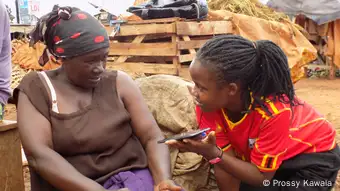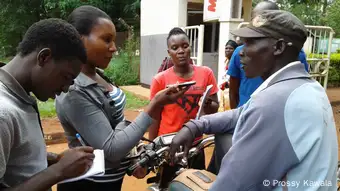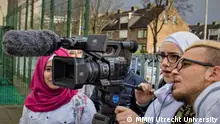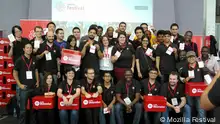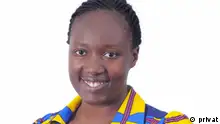MILEN Media and Information Literacy Network
Never before has there been a need for media literacy like NOW!
"Ugandans have no public awareness for media literacy - despite the fact that 90% of young people are frequent and ardent media consumers", says Prossy Kawala.
Young people in Uganda are the majority, with 77% of the population under 30 years of age. This age group is eager and fascinated by media and new media trends. Nevertheless, many of them have little or no knowledge about secure digital tools, nor the skills to engage and participate productively.
In this interview Prossy Kawala, MILEN member, cofounder and director at the Centre for Media and Literacy Community Development (CEMCOD) in Uganda, talks on #mediadev about how media literacy strengthens community voices in decision making.
#mediadev: How can media literacy training for young people promote independent and responsible thinking?
Media literacy is an important requirement for young people in an increasingly digital culture. It furnishes children and young people with the skills, knowledge and understanding that will help them to take a full and active part in social, cultural, economic, civic and intellectual life now and in the future. In addition to the traditional media such as television, film, music, and magazines, these young people are increasingly tickled by the new media landscape, which is evolving at a startling pace, with a greater diversity of content, new types of media and different platforms.
Unfortunately, media makers and producers have muddied the waters by allowing a lot of unclassified and unvetted content to find its way onto all platforms. Yet we believe in young people telling their own stories and articulating issues that they and their communities care about. When young people get to understand how media works and the power it wields over their own choices, then they learn how to use it in a responsible manner. Thanks to our media literacy training efforts, we are now seeing young people become community representatives and essential independent voices, who can make news, report accurately on key development issues and demand transparency and accountability in service delivery. They are thereby effectively participating in influencing and setting the development agenda through media. They are articulating issues that they and their communities care about.
#mediadev: How would you describe the standard of media literacy in Uganda?
Unfortunately, in Uganda, media literacy has not received the attention it needs and it is not enforced enough - despite the fact that 90% of young people are frequent and ardent media consumers. But people, and especially young people, need the ability to critically evaluate images and messages across media platforms (click and watch a video with Prossy Kawala). They need to engage as critical media consumers, they need to develop media literacy skills. These include being able to access media on a basic level, to analyze it in a critical way based on certain key concepts, to evaluate it based on that analysis and, finally, to produce media content.
It is the responsibility of the media to impart values such as social responsibility and ethics, and empower young people to take a more active role in acquiring knowledge and skills. However, the situation is that many media makers are not giving enough thought to the needs of young people and entire communities. Instead, they flood platforms with messages that can be difficult for the public to understand. It is important that content providers in television, radio, and in print-media understand the impact of their messages, as this is crucial to changing the way media is viewed and understood. There is a need on both sides. Media makers should become more aware about the content and the impact of media, and media consumers need better media literacy skills.
#mediadev: Is there a best practice example that had a really big impact?
Sure! Our training has had great impact on the young people themselves, who had embedded themselves into a culture of silence and non-participation, but have now evolved into independent representatives and advocates for positive change within their local communities.
Case in point is 24-year-old Esther Among from the Eastern district of Mbale. In 2015, Esther reported and followed up on the water scarcity problem that had hit her village of Buddi B in Nakaloke Sub County in Mbale district. Due to her vigilance in following up the water scarcity problem in her community and the subsequent response received from the local leaders, Esther was selected to head the mobilization team in raising funds to set up a new water-harvesting tank in her village. Esther speaks about this with pride and believes - once successful –approximately 400 people within her village and the surrounding area will benefit.
#mediadev: How does CEMCOD contribute to the spread of media literacy?
CEMCOD does not work in isolation. It encourages partnerships with radios, government agencies and particularly local governments in cascading our media literacy initiatives.
In Uganda, radio station partners are still very important. The choice for radio is deliberate as young people and about 80% of our population will most likely tune in to radio as a preferred medium for information. Through the radio and with assistance from the radio staff, we identify vibrant young listeners who occasionally call in to contribute to radio discussions. The station then takes the lead in selecting youngsters for training as community reporters. We encourage greater participation of females. We also conduct training in gender mainstreaming in community reporting as a deliberate gender awareness strategy. Gender is an integral aspect in all our programming.
- Date 14.12.2018
- Author Petra Aldenrath
- Feedback: Send us your feedback.
- Print Print this page
- Permalink https://p.dw.com/p/36m9W
- Date 14.12.2018
- Author Petra Aldenrath
- Send us your feedback.
- Print Print this page
- Permalink https://p.dw.com/p/36m9W


